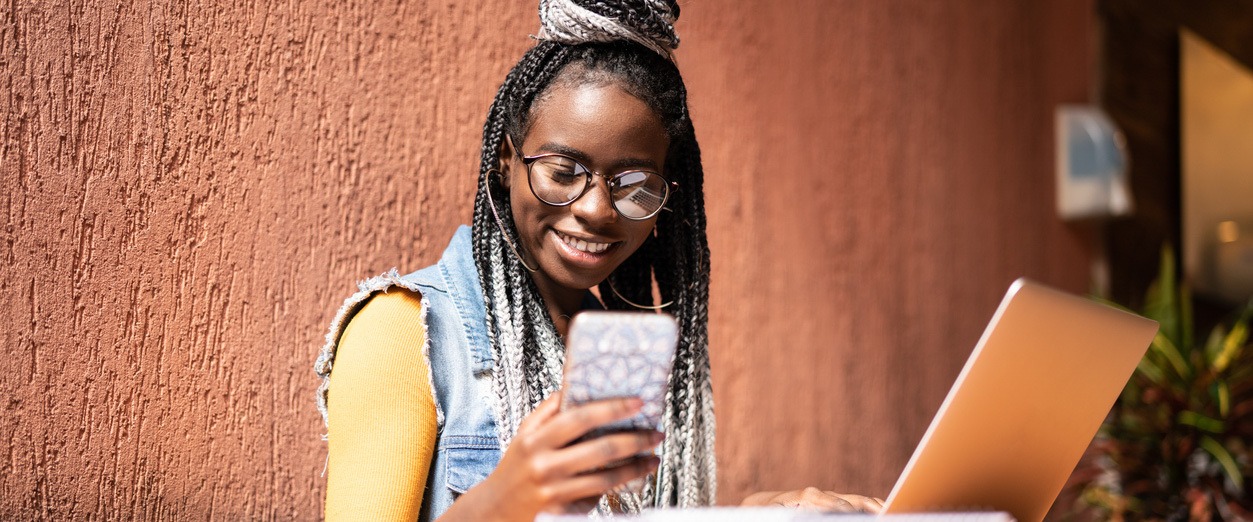Teaching for Remote Learning: Lessons We’ve Learned So Far
Transitioning to remote learning taught us a lot about rethinking high school. Here are a few things we’ve learned from schools across the country.

As students, educators, and education leaders across America adapt to a remote lifestyle, we at XQ are inspired by the innovation, creativity, and compassion we see. In the spirit of sharing what we’re learning along the way, we thought we’d share “what we have learned so far” from XQ schools across the country.
Hold To What You Know To Be True
Coaches often remind athletes to “stick with what got you there” before they begin a period of intense competition. Whether that time of intense challenge is on a field or in a new learning environment due to a pandemic, it is important not only to adapt, but also to stick with your existing strengths and rely on your expertise and experience.
Here are three themes that we’ve seen in action at our XQ schools:
- Keep students at the center. As always, design around the learner and the learning. Ask yourself if decisions are being made in the best interest of all students. It is hard to go wrong with that principle at the forefront.
- Keep equity at the core. As we say here at XQ, equity in education never happens automatically. Equitably serving all students requires intentional action. Education Trust-NY compiled a list of “6 Steps Schools Can Take to Address Educational Equity,” which outlines specific measures schools can take to support instructional equity during school closures. XQ school leaders are considering ways to advocate for equity outside of the walls of their schools: Stacy Kane, Co-Founder & Executive Director of Washington Leadership Academy, is ensuring that equity be at the forefront of College Board’s Advanced Placement testing adjustments.
- Support potentially marginalized students and families. It is important to recognize how this crisis affects members of the community differently. For undocumented students and families in Texas and New York City, ImmSchools created a guide and compiled resources to help navigate this precarious time. XQ school leader Eric Tucker, Executive Director of Brooklyn LAB High School, has curated a specific list of resources to help better serve students with disabilities. (You can find this resource and many others in the High School Resources for Remote Learning Hub.)
Pivot To What You Are Learning To Be True
During these unprecedented times, your knowledge, desire for equity, and educational training provide a strong foundation. But, this transition to remote learning requires new strategies and tactics. We are learning so much about how to deal with this moment by talking to our XQ school leaders and wanted to share strategies and tactics in place at XQ Schools across the country!
Generally speaking, these tips speak to the importance of routinizing operations, ensuring strong learning experiences, and setting students up for success.
- Build upon existing structures and systems for communication and learning. Build on what is familiar. Just like how a typical school day would start with daily announcements over the school loudspeaker, it is important to maintain consistency throughout remote learning. For instance, Principal Shatoya Ward of Purdue Polytechnic High School offers rousing daily video announcements on Google Hangouts.
https://youtu.be/8HdiJ6xJqqw - Establish new routines and rituals early on to develop schedules and clarify expectations. As we know from learning science, routine and ritual are particularly important to the adolescent learning (and even more so in a time of uncertainty). While you can leverage existing structures, there will inescapably be new routines. Purdue Polytechnic High School provides another example of how schools are successfully adapting to this new learning experience. Their new routine includes an extended morning announcement that outlines instructional plans for the day. Purdue Polytechnic utilizes Google Chrome to show students their new class schedules, upcoming assignments, and links to Google Hangouts. Don’t forget: routines are important for teachers, too!
- Lean into the learning. Washington Leadership Academy, an XQ school in Washington, DC, has created weekly modules across subjects. For instance, during the week of March 16th, when many schools were just figuring out how to connect with students remotely, Washington Leadership Academy posted Learning Modules for their students. These modules covered topics like Boolean expressions for computer science, elastic and inelastic collisions for science, and cultural imperialism in English Language Arts. Teachers at Washington Leadership Academy also offered remote office hours for their students.
- Plan for learning at the system level. The state of Rhode Island created a plan to leverage teachers and school staff to support instruction and to aid students and families. They also conducted device and connectivity surveys to identify and resolve access issues. The state is also building out a bank of project-based learning resources this week to support instruction that doesn’t require a device. They are partnering with local radio stations to read books and share assignments—in English and Spanish. Similarly, New York City has developed a remote learning strategy that allows students to receive online instruction from their teachers with collaborative opportunities for teacher and student interaction. Students can complete assignments, projects, and assessments similar to their classroom experience.
- Tap into an innovation mindset. Schools with flexible mindsets and structures are in the best position to shift to remote learning. Purdue Polytechnic High School Executive Director Scott Bess said, “it turns out having an innovative staff pays dividends in times like these.”
- Build in regular “beats” for connection and culture building. During stressful and overwhelming moments, it is important to maximize regular connection in order to build a foundation of safety and trust. More than that, regular connection can provide early warnings and can indicate if students need more support. Schools like Círculos in Santa Ana, are finding innovative ways to engage with one another. Their small-group mentor classroom program now exists online, in what they are calling “virtual circles,” where mentors, teachers, and students connect with each other twice a week in order to build and strengthen their community online.
- Make sure support structures are in place and meet students where they are. Ensuring students have access to food, wifi, and devices is really important. And XQ districts and schools are getting that done: New York City has Regional Enrichment Centers (RECs) for children of first responders, and every NYC school building will have grab and go meal service; Grand Rapids Public Museum Schools has seven nutrition grab and go meal sites for students to receive up to three meals/day; Furr High School hosts a food bank for their community, which is also a location to retrieve monitors; and Círculos administrators and counselors even personally delivered district WiFi hotspots to students in their homes.
- Reassess new and developing needs to reallocate resources. For example, Elizabethton High School identified extra grant funds to purchase Chromebooks for families without access to remote learning.
We know that we are just in the beginning and that there is a lot more to learn. Tell us what you’re learning or fill out our guest blog form if you’d like to share your story.









